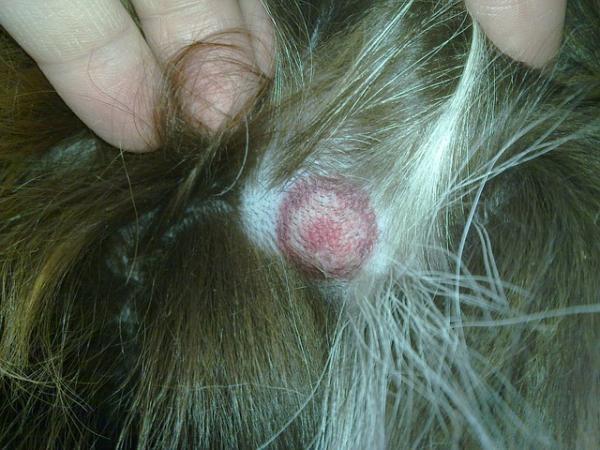10 Signs Your Pet Has Lyme Disease

What is Lyme disease?
Lyme disease is caused by the bacterium Borrelia burgdorferi and, in rare cases, Borrelia mayonii. It is spread to humans through the bite of infected blacklegged ticks. Typical symptoms include fever, headache, fatigue, and a distinctive skin rash known as erythema migrans.
Lyme disease, caused by the bacterium Borrelia burgdorferi and transmitted by tick bite, affects domestic animals (dogs, horses, and potentially cats) and people. At least four tick species may send Lyme disease. However, the vast majority of Lyme disease transmissions are caused by the bite of a minor bug known as a deer tick or black-legged tick.
But the good news? The infection that may lead to Lyme disease is avoidable.

What are the symptoms of Lyme disease in animals?
In dogs, Lyme disease may manifest itself in various ways, but the most frequent symptoms include lameness, enlarged lymph nodes, joint stiffness, lethargy, and lack of appetite. Furthermore, Lyme illness has been linked to significant renal issues in dogs.
Shifting-leg lameness, generalized stiffness, hypersensitivity to touch, weight loss, and poor performance are all clinical indications of Lyme disease in horses. Bacteria may sometimes invade the central nervous system, causing neurologic symptoms.
Dogs may not exhibit sickness symptoms for weeks or months after being bitten by an infected tick, and many infected dogs never show signs. Fortunately, several tests can establish whether or not a dog has been infected; however, some tests might take up to nine weeks to get positive findings.
What are the three stages of Lyme disease?

Stage 1 is called early localized Lyme disease. The bacteria have not yet spread throughout the body. This stage occurs one to 30 days after the tick bite and is distinguished by a bullseye rash at the location of the tick bite. This rash is the typical initial symptom of an illness. The illness has not spread throughout the body and is treatable.
At this time, the following are notable additional indications and symptoms:
- Expanding rashes that resemble a bull’s eye, with or without stinging or burning
- Fatigue
- Muscle ache
- Joint discomfort
- Headache
- Chills
- Fever
- Stiffness in the neck
- Lymph nodes swollen
- Throat discomfort
Stage 2 is called early disseminated Lyme disease. The bacteria have begun to spread throughout the body. This stage happens many weeks or months after being bitten by a tick. Bacteria have started to colonize the body. Flu-like symptoms are accompanied by the following:
- Joint discomfort
- Hand and foot pain, weakness, and numbness
- Meningitis is an inflammation of the brain membranes characterized by a headache, neck pain, and eye discomfort caused by light.
- Mild confusion, changes in memory, emotions, sleep, and concentration are common symptoms of encephalopathy, a kind of brain disorder.
- Some areas of the skin may show discoloration or edema.
- Heart blockage
- Pink vision (conjunctivitis)
- Paralysis of the face
- Several rashes
Stage 3 is called late disseminated Lyme disease. The bacteria have spread throughout the body. If Lyme disease is not treated correctly or is left untreated in the first two stages, it may proceed to a chronic form known as late disseminated Lyme disease. This stage may occur months to years after being bitten by a tick. Bacteria have spread throughout the body, causing patients to suffer from persistent arthritis in one or more joints and heart and neurological system issues. Among the most noticeable indications and symptoms are:
- Hands, feet, elbows, and knees have the appearance of cigarette paper (acrodermatitis chronica atrophicans)
- The most common symptom is knee joint discomfort.
- Inflammation of the brain and spinal cord may cause poor coordination, partial paralysis, muscular weakness, total paralysis, seizures, intellectual incapacity, hearing loss, and urine bladder malfunction.
- Inflammation, discoloration, and shrinking are symptoms of skin problems.
- Heart rhythm irregularity
Can Lyme disease be treated in animals?
Lyme disease symptoms usually diminish within the first three days if the condition is discovered and treated adequately early enough with a course of antibiotics.
Antibiotics are generally prescribed for at least 30 days. This often relieves symptoms rapidly, but in rare instances, the infection persists, and the veterinarian may require more medicine. Other treatments focused on addressing or treating particular symptoms may also be included in treatment.
Furthermore, the organism that causes Lyme illness, on the other hand, is exceptionally adept at concealing. Although treatment is usually effective in eradicating clinical symptoms, dogs who test positive for Lyme disease will stay positive for years, if not forever. If your dog tests positive but is otherwise healthy, your veterinarian will advise you whether or not to treat it at that time.
However, there are many ways to prevent Lyme disease in pets. Veterinarians may do interventions such as safe flea treatment options for your pet and home to lessen the flea attacks that might hurt your furbabies. Keeping your pet in good health, inside and out, will help them recover from any ailment they may encounter.
Hence, a pet with healthy skin and joints will be easier to diagnose than one with chronic inflammation. Ensure your pet gets plenty of hydration, good fats, and Omega-3 in their diet to keep their body healthy. Keeping your dog or cat on The Original CrockPET Diet, along with careful and loving attention, is the best way I know to maintain a healthy pet and protect them from preventable diseases like Lyme Disease.
Can animals pass Lyme disease?
Ticks cannot fly or leap; they can only crawl. They attach themselves to their host by waiting at the tips of plants. When a dog or human brushes up against a shrub, the tick instantly latches on and creeps, looking for a spot to bite.
It may attach to any region of the human body, although they are most often found in locations that are difficult to notice, such as the groin, armpits, and scalp. The tick must be attached for 36 to 48 hours or more in most instances before dogs may transfer the Lyme disease bacteria.
The bites of juvenile ticks called nymphs infect the majority of people. Nymphs are little (less than 2 mm in length) and difficult to notice; they feed in the spring and summer. Adult ticks may also spread Lyme disease germs, but since they are bigger, they are more likely to be identified and removed before the bacterium can be transmitted. Adult Ixodes ticks are most active during the winter months.
To ponder:
When your dog has been strolling through tick-infested regions, it’s a good idea to check your pet (and yourself) for ticks when you get home. Tick removal is not as straightforward as you may believe. If you find a tick on your dog, call your veterinarian for information on how to remove the tick properly.
We also suggest that you inspect your own body for ticks. Humans are far more susceptible to Lyme illness than dogs. If you find a tick on your skin, see your doctor for instructions on how to remove the tick.
It is crucial to emphasize that your dog does not represent a danger to you or your family, but you are at risk if you spend time outside with your dog and are in the presence of sick ticks.














